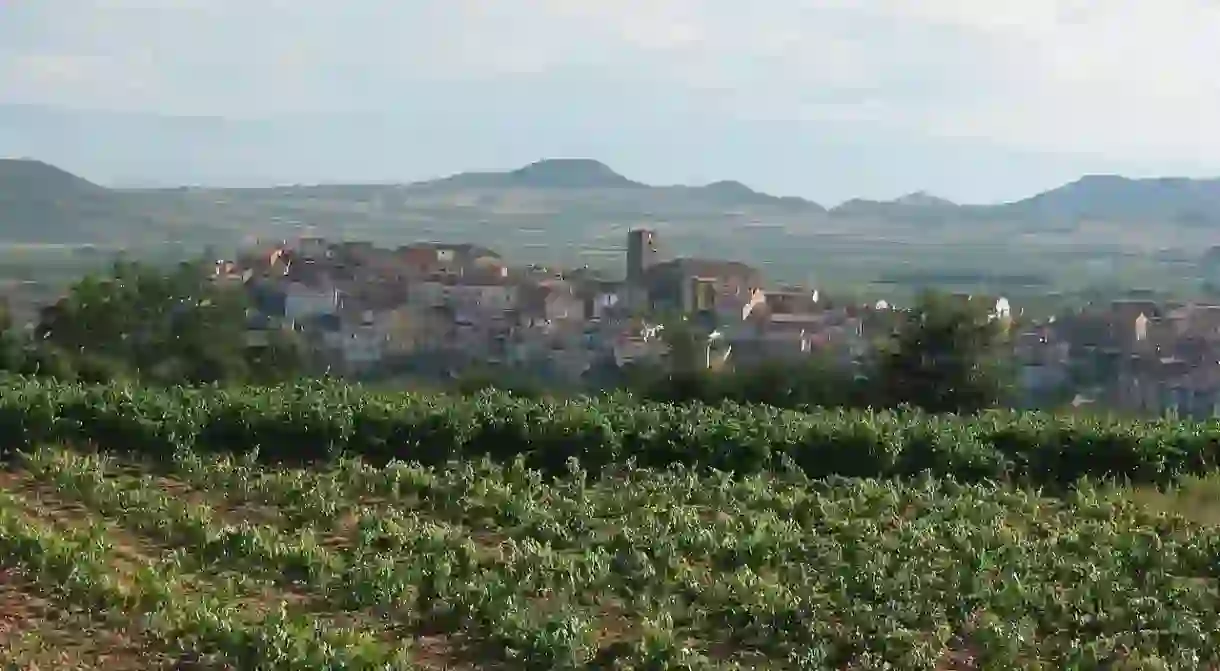The Best Vineyards in La Rioja

La Rioja is located in northern Spain, and is one of the country’s best wine regions, if not one of the best in the world. If you find yourself on a city break in Bilbao, why not make the trip approximately two hours to the south to witness this world-famous wine region for yourself? Here is our pick of seven of the best vineyards in the area.
Bodegas Muga
Bar
Located in Haro, home of the world’s biggest wine fight – La Batalla del Vino –, Bodegas Muga is not only one of the best wineries in La Rioja, but it’s also one of the very few still making its own barrels, too. They offer daily tours by reservation only, but also have a shop and a bar, where you can enjoy tastings.
Bodegas Marques de Riscal
Bodega, Spanish

One of La Rioja’s oldest wineries, Bodegas Marques de Riscal, fuses together the old and the new, featuring a futuristic hotel designed by Frank Gehry, designer of the famous Guggenheim Museum in Bilbao. Founded in 1858, the winery produces more than three million bottles of red wine per year. There are wine tours of its large facilities, as well as an on-site Michelin-starred restaurant.
Bodega Ysios
Winery
Like Bodegas Marques de Riscal, Bodega Ysios combines wine with architecture. Designed by the famous architect Santiago Calatrava, it was created as an emblem of La Rioja wine country and is supposed to mirror the undulation of the Cantabrian mountain range, which acts as a picturesque backdrop. Inside you’ll find a modern building with an upstairs tasting room.
Bodegas López de Heredia
Bodega, Spanish

Situated just up the hill from Muga, also in the town of Haro, López de Heredia is another old winery – a vast wine complex that is just as impressive above ground as it is below. The oldest parts of the winery are over 140 years old, while successive generations have each added new structures and buildings. Head down into the impressive wine cellars to explore a maze of underground caverns filled with barrels upon barrels. It is well known for its Viña Tondonia, Bosconia Reserva and Gran Reserva wines. Visits are by appointment only.
Bodegas Roda
Bodega
Another of Haro’s wineries, Bodegas Roda is one of the newer vineyards in the town, and although they began producing wines in 1987, the current building wasn’t completed until 2001. Today, the building acts as a spectacular viewpoint overlooking the River Ebro. Its cellars, however, date back to the 19th century, and are cut into the mountainside, going down to a total depth of 12 metres. As well as the cellars, tours also include a visit to a photographic exhibition, tastings of two of Roda’s wines and tastings of their extra virgin olive oils. Appointments must be made in advance.
Dinastia Vivanco
Bodega, Spanish

Vineyards, wine producers, a restaurant and one of the world’s best wine museums, Dinastia Vivanco is a whole wine experience, rather than simply a cellar tour and tastings. Start with a wine tour of the bodega, followed by a browse around the museum to learn all about one of Spain’s favourite tipples and how it’s made. Follow this with a walk around the gardens and a visit to ‘The Wine Corner’, where you can taste a total of 14 different wines from the Vivanco collection. There’s also an excellent restaurant, where to can enjoy a delicious meal to round off your visit.
Bodegas Baigorri
This ultra-modern winery sits like a glass box on top of the hillside. Designed by the architect Inaki Azpiazu, most of Bodegas Baigorri is actually located underground – going seven stories deep. The building was designed to blend into the natural environment, as well as to facilitate its unique method of wine-making – using only gravity to move the grapes (no machinery at all). It also allows visitors to stand in the centre and watch the entire wine-producing process happen around them.













